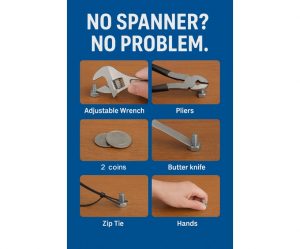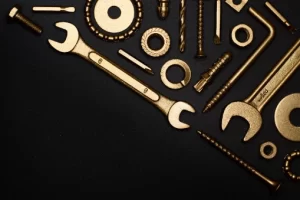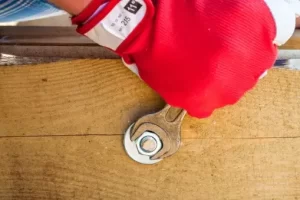How To Maintain Your Handtools?
Most people are not trained before using manual tools, resulting in frequent accidental injuries. According to statistics, injuries caused by improper use of manual tools account for 7 to 8 percent of all accidental injuries each year. Therefore, for all kinds of common manual tools and portable power tools, we must understand the correct use method and pay attention to the safety of use.
Hand tools maintenance seem like a chore,but it is important that you may need everyday use. They allow you to work with wood in an efficient and safe way, which is why it’s so important to maintain your hand tools properly, to prolong their life and avoid having to purchase new tools.
1. Use the right tools for the right job.
When you’re working on your car, it’s important to use the right tool for the job. Don’t use a hammer to cut wood and don’t use a saw to drive screws!
A screwdriver should only be used in places where there is no risk of it slipping and damaging itself or others nearby. If you need to loosen something up, then go ahead and get out your wrench or pliers instead (if applicable).
2. Stop rust before it starts.
Keeping your tools dry is the best way to prevent rust. If during work your tools get wet, disinfect them first and wipe them dry after use. If you must use a wet tool for an extended period of time, clean it thoroughly before storing it away in order to prevent corrosion from occurring inside the tool’s body.
3. Avoid dull blades – sharpen your tools regularly.
A dull blade is more likely to slip, which can lead to injury or damage to your hands and/or work environment. It also means that you will have less control over the tool, which makes it harder for you to cut accurately or cleanly through the wood piece in front of you.
4. Maintain the handles of your woodworking hand tools.
The handles of your woodworking hand tools are an important component that must be maintained to ensure they last a long time. If you have a tool with a handle, it’s important to keep the handle clean and well-oiled so that it can withstand the rigors of use.
- Scrape loose material from the surface with a scraper or sandpaper before applying any finish or oil on the wood. This will help prevent dirt buildup on your working area and make sure that you don’t get any oil stains on your working bench top when using it later in its lifetime.
- Apply paste wax using cotton rags (not paper towels). This prevents oxidation as well as keeps moisture from building up inside the handle over time – two things which could cause warping or cracking later down the line!
5. Disassemble your tools when you’re done with them, and clean them up.
When you’re done with a tool, disassemble it and clean it up.
- Use a rag or paper towel to wipe away excess sawdust from your tools.
- Use a brush to remove sawdust from the teeth of your saws. If possible, use an old toothbrush that has been soaked in mineral oil so that it’s soft enough not to damage the surface of your saw teeth when cleaning them (you should do this anyway).
- Clean out any bits that you’ve removed from inside drill bits by using wire brushes if they have been dirty; otherwise just give them a quick rinse under running water before storing them properly in their case again!
6. Store your tools properly.
- Store your tools in a dry place or preferably in a tool box.
- Avoid storing tools in direct sunlight.
- Avoid storing tools in a damp place, such as a garage or shed, as this can cause rust to form on the tool.
- Store your hand tool collection away from corrosive chemicals and cleaning products that are often used by DIYers, such as bleach and ammonia-based cleaners (which contain phosphoric acid).
7. Oil wooden tools at least once a month.
Wooden tools are going to last longer if you oil them regularly. Oiling is not just a cosmetic thing; it helps prevent cracking and splintering, which can cause damage or ruin the tool’s function. You should oil wooden handle tools at least once a month, but some people prefer to apply tar or turpentine into the wooden handles of their tools for extra protection against moisture and bacteria buildup.
Choosing an appropriate oil depends on what type of wood you have in your collection: linseed oil is best for hardwood trees like oak and maple because it tends to be more resistant than mineral oils such as vaseline (which is also used by guitarists). If possible, try out both types before deciding which works better!
8. Regularly Inspect Your Tools
- Check the condition of your tools before use, and again when you put them away.
- Is there a loose part? Are there any cracks in the handle? Rust? Wear and tear? Missing parts that need replacing, such as an eyelet or screwdriver bit
9. Follow and Practice Safety Precautions
Anyone who has ever worked with hand tools knows that they can be tricky to handle. Even the most experienced worker can encounter a serious injury. That’s why it’s so important to take proper safety precautions, including wearing gloves. Gloves significantly reduce the risk of slipping and provide a better grip on the tool. In addition, they help to protect your hands from cuts and abrasions. Whether you’re working with a hammer or a drill, it’s always best to err on the side of caution and wear gloves. With proper safety precautions, you can avoid potential accidents and injuries
Final Thoughts
Now that you’ve read our tips, we hope you’re ready to start taking care of your tools more carefully. The more you know about how tools work, the better off you’ll be when it comes time to sharpen them or clean them up after use.



